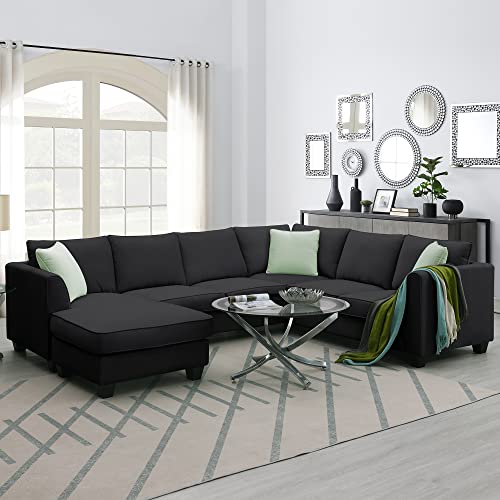The Difference Between a Sofa and Couch
Sofas can be used to give depth and dimension to large spaces. They are also available in a wide array of styles that suit a variety of aesthetics.
While debating the difference between sofa and couch may not be the best small-talk topic for your next dinner party, knowing the differences between modern and traditional furniture can help you find the perfect piece for your home.
Origins
Many people confuse couches and sofas. Interior designers will tell you that there is a difference between the two furniture pieces.
The term "couch" is derived from the Arabic suffah (which originally meant "a raised portion of the floor adorned with cushions and carpets to sit on"), originates from the Arabic language. It was more popular in Britain, where travelers brought back variations on the same style, referred to as sofas.
By the middle of the 19th century, British craftsmen were producing sofas that were similar to the ones we still use. The task table was created during this time to aid in reading, an activity that was becoming increasingly important. The top of the table is hinged and can be lifted to provide an angled stand for books or papers and a tiny locking drawer is able to store writing tools.
the at the same time, British culture was changing. Textiles made of cotton were becoming more affordable and women started to wear less restrictive clothes. The new lifestyle of casuality encouraged leisure activities like reading and playing cards. It allowed people to lie on couches instead standing or slouching, as they used to do.
The shift in society towards a more relaxing life style is reflected in the design of modern sofas that can be as formal or casual as you'd prefer. The fad Chesterfield style, for example is from the 1800s and is defined by a wooden frame, curves in the armrests as well as a deep button tufted design that appears like the chairs found in Victorian London gentleman's clubs.
Styles
Sofas and couches are available in a wide range of styles. From the traditional to contemporary, you'll find a sofa that suits your personal taste and decor. A well-crafted sofa combines comfort and beauty which makes it the centerpiece of any room. With so many options it is essential to focus on quality and craftsmanship when you choose the best sofa. Investing in a quality piece of furniture is an investment in your family's well-being and your home's beauty.
Typically, a sofa has more of a formal appearance and sits just a few people at a time. A couch is more casual and can hold up to four people. Some sofas can be transformed into beds if you are hosting guests or kids.
The difference between a couch and a couch is more about preference than functionality. A lot of people use the terms interchangeably and the distinctions are less important than we once believed. For example the back of a sofa could be more striking than the back of a davenport while a chesterfield might be a more ornate design.
Both couches and sofas can be upholstered with different materials, so you need to consider the look you'd like for your space prior to deciding on a specific sofa model. The fabric you select can also make a big difference in the overall appearance of your sofa.
Leather is a well-loved choice, as it adds a touch luxury to any space and complements various interior styles. Other options for fabrics include linen and cotton which are both durable and lightweight. You can also choose the suede sofa, which gives a splash of texture or color to your living space.
Functions
Sofas are typically thought of as an option for seating that is more formal and are best suited to more formal settings, whereas couches are more casual and are typically preferred for more relaxed spaces. These distinctions aren't set in stone. The two terms also have different etymologies as well as cultural nuances that affect their usage today.
Sofas are structured with upholstered sides, backs and arms. They are a formal option for more sophisticated spaces. Couches on the other hand, feature soft lines and might not even include arms, creating more of a laid-back look. These subtle differences in style and functionality are what separates sofas from couches.
If you're looking for a chic leather or plush fabric sofa, there are many options to suit your style and space. Modular sofas let you modify your sofa so that it reflects your lifestyle and matches the design of your home.
Modular sofas consist of modular pieces that can be moved around. These components can be arranged in various configurations, including two-seater or three-seater options, as well as corner and L-shaped options. Modular sofas allow you to add additional modules later on if your needs change or if you have more guests.
The sofa is an essential part of any living room. It brings luxury and comfort to families and friends. It can be the centerpiece of your space or just a spot to relax and unwind. The right sofa will provide the perfect place for intimate conversations or a place to enjoy your cheese platter that you've carefully created. If you're ready to find the sofa that's right for you, Spoak's interior design tools can help. You'll be able visualize your ideal sofa prior to its arrival and make any changes you'd like prior to it arriving at your doorstep!
Materials
Sofas are designed to withstand long periods of use therefore a durable fabric is vital. Durability is measured by the fabric's capacity to stand up to wear and tear, and also protect against damage caused by sunlight, water or other elements. Wool, cotton, and linen are some of the best natural fibers, however nylon and polyester are more durable.
Cotton is an upholstery fabric that is widely used because it is inexpensive as well as breathable and absorbent. It can also take patterns and colors well, making it simple to find a couch fabric that is a perfect match to your style. However, pure cotton is not very resistant to staining and fade, so it is often blended with other materials to improve durability and strength.
Linen is a popular material that gives a classy rustic look for couches, and it can be weaved with other natural or synthetic fibers to boost its durability. It is very soft to the touch and looks great when paired up with an organic or rustic style. However, it could get wrinkled and brittle if exposed to oil or sunlight.
Polyester and nylon are the most commonly used synthetic fabrics used in the construction of sofas due to their ability to be weaved into a wide range of textures and are sturdy. They can be treated to increase their resistance to stains, fading and other damage. They aren't as breathable and might not be a good choice for hot climates. Whatever your choice of fabric, Higby recommends looking for frames made of kiln dried wood with mortise and tenon jointery and opting for an eight-way hand-tied spring suspension. custom couches suggests using foam cores or a spring core that is covered with fiber as the cushion filler to make it softer.
Budget
Sofas benefit from having a larger seating area and are an excellent choice for living rooms with large spaces. Sofas are a great option to bring elegance and comfort to any room, whether you use them to socialize with family and friends, watching TV or taking a nap during the weekend. They are often equipped with storage solutions, a great option to reduce clutter and declutter. Many are upholstered in leather, which has an elegant and contemporary appearance and feel. There are plenty of budget alternatives, ranging from bonded leather to full grain.
It is important to consider your overall budget and how much you are able to afford for a sofa when buying one. It is also beneficial to be aware of the different factors that influence pricing and quality so that you can reduce your options.
The fabric type, cushion filling and other factors can affect the price. Certain high-end sofas are constructed of high-end materials like cashmere or silk. This can increase the price. On the other hand, lower-end sofas are usually filled with feathers, foam, or fibre. Feather is more durable and holds its plumpness longer, while fibre and foam are more firm and less expensive.

Other factors that affect the price of sofas are their dimensions, shape and their functionality. You'll pay more if opt for a sectional sofa that has a chaise instead of a traditional two-seater. In addition, certain brands could have hidden costs such as delivery charges or warranties that could be costly. It's a good idea look into the market and shop around for the best prices, especially during holidays like Black Friday.
